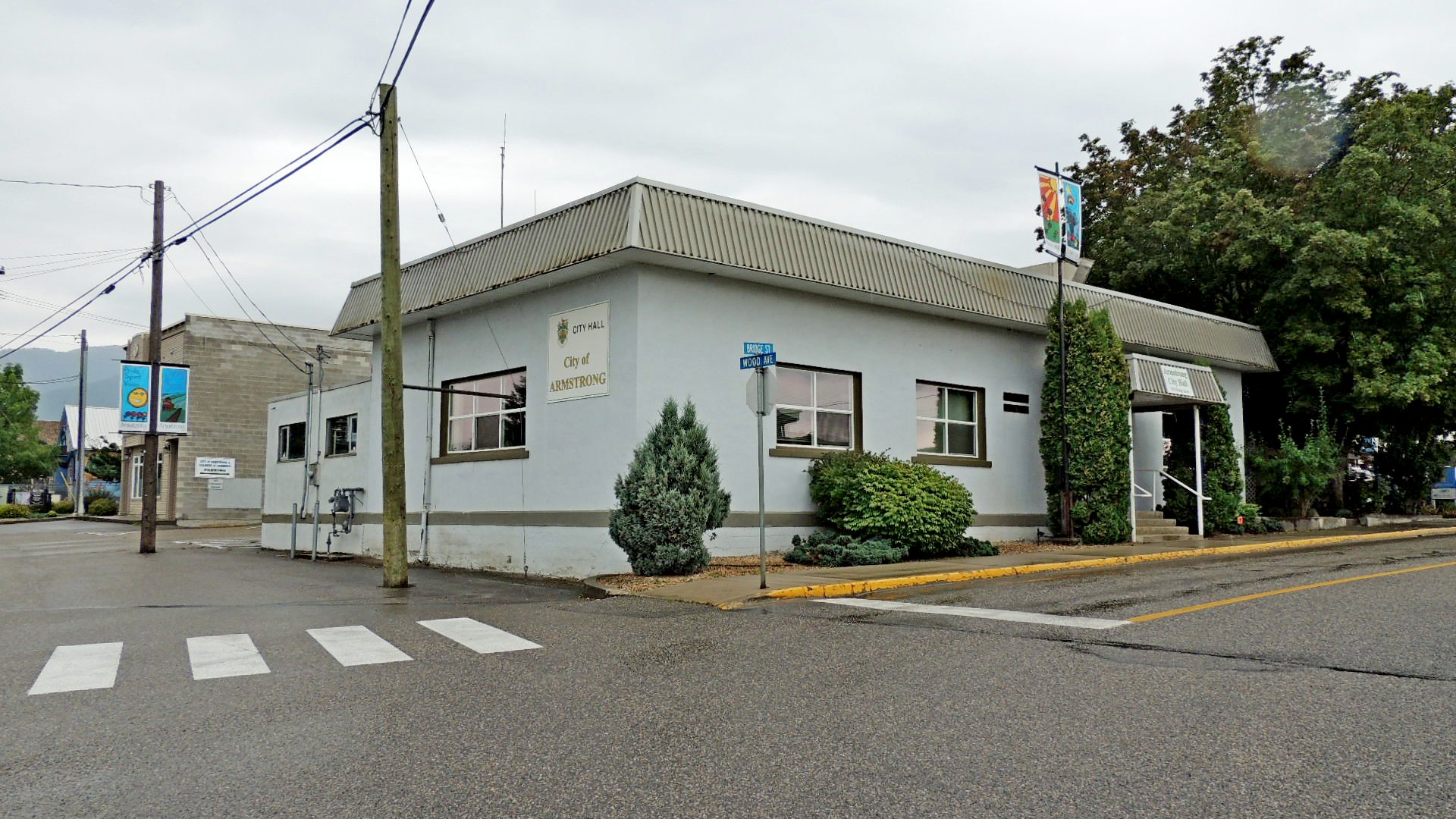|
 Armstrong, British Columbia Posted by:  T0SHEA T0SHEA
N 50° 26.906 W 119° 11.817
11U E 344027 N 5590797
Armstrong today is a thriving town of about 5,000 inhabitants in the North Okanagan, nestled in the Spallumcheen Valley. Along Highway 97A, it is equidistant about 480 km (300 miles) from Vancouver, BC, Calgary, AB, Seattle, WA and Spokane, WA.
Waymark Code: WMNBCD
Location: British Columbia, Canada
Date Posted: 02/05/2015
Views: 1
Armstrong's City Hall is on Bridge Street at Wood Avenue, a block off Pleasant Valley Road, which serves as the main drag in the city. Nearby are the Oddfellows Hall, the museum and the Armstrong Visitor Centre. Though it has undergone a series of renovations, the city hall is an older building and getting a little small for the town.
Around Armstrong "A Brief History"
When work was completed on the Shuswap\Okanagan Railway in 1892, Armstrong consisted of a lone box car which served as station and home for the rail agent. "Apart from the box car," remarked one pioneer, "there was just willows & swamp". Ironically, the largest settlement in Spallumcheen, Lansdowne, had been bypassed by the S & O Line. Undaunted, the citizens of the community packed up belongings, even buildings and resettled beside the tracks in Armstrong.
Today the only standing testimony we have of this once sprawling western town is the old Lansdowne cemetery.
Armstrong was incorporated as a City Municipality on March 26, 1913.
Armstrong was named after William Charles Heaton-Armstrong. In 1885 Heaton-Armstrong started a private bank and arranged a successful issue of bonds for the Shuswap and Okanagan Railway and visited Armstrong which was named for him, in 1892.
The first Mayor of the City of Armstrong was JAMES M. WRIGHT, 1913.
St. James Anglican Church was moved from Lansdowne in the early 1890s; it is the oldest church in Armstrong - on the corner of Patterson Ave. and Mill St.
The word Spallumcheen is Indian in origin and signifies in the Indian language "The meeting of the waters". This no doubt refers to the low lying land joining the Columbia and Fraser River drainage basins located approximately one mile south of Armstrong where the two drainage streams split - (one flowing south the other north).
The Armstrong Hotel was built in the early 1890s for Hughy Keyes.
The first native born white child in the North Okanagan was Mrs. Charles (Sophie) Patten (nee: Sophia Catherine Ehmke) October 15, 1878.
In 1873 Alfred Postill pre-empted 640 acres of land on Deep Creek. In 1878 he erected a sawmill with a capacity of 12,000 board feet per day. Levi W. Patten began managing the mill in 1883 and continued for 22 years
Augustus Schubert was the last surviving member of the historic Cariboo Overlander Expedition in 1862. He died here in 1946 at the age of 91.
In 1904 E.R. Burnett grew the first celery in Armstrong (known as "Celery City"). The first crop amounted to 300 Ibs.
Armstrong's first electric power was generated by pelton water wheel in the old Power House on Davis Creek. Work began on the structure in 1906. It was later supplemented by diesel power.
Round Prairie School began as a community effort and was completed by August Schubert Sr. and August Schubert Jr. It was erected in 1885 and later taken over by the government. Thomas Leduc was the first teacher.
George Patchett built the first house in Armstrong in 1891. It stood just off Patterson Ave. at the edge of the bottomland.
Field lacrosse was in Armstrong as early as 1905.
Vance Young was the first white male born in Spallumcheen, October 25, 1878.
In 2013 Armstrong [celebrated] their 100th birthday.
From Armstrong History

Name: City Hall

Address:
3570 Bridge Street
Armstrong, BC Canada
V0E 1B0

Date of Construction: Unknown

Web Site for City/Town/Municipality: [Web Link]

Architect: Not listed

Memorials/Commemorations/Dedications: Not listed

|
Visit Instructions:
Post at least one original photo of the building that is a different view from the one on the page and describe your visit, including the date. Add any additional information that you may have about this building. A GPSr photo is NOT required
Recent Visits/Logs:
| There are no logs for this waymark yet. |
|
|
|
|